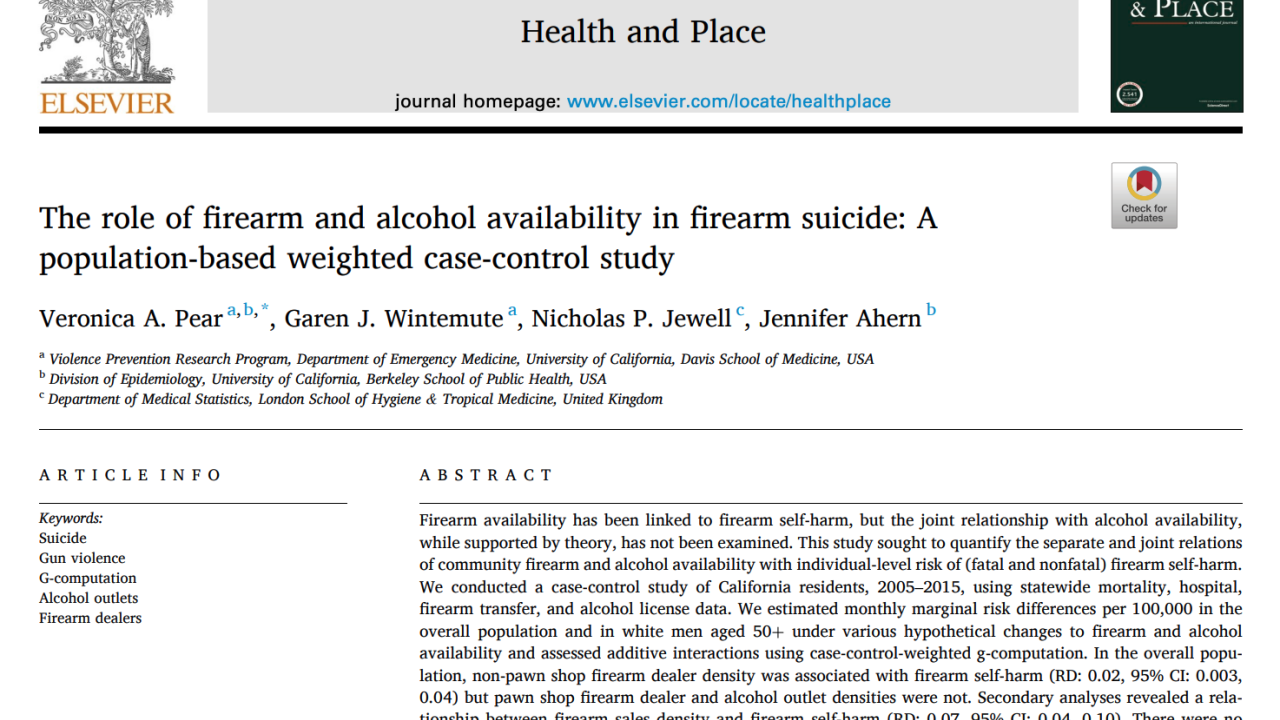
The role of firearm and alcohol availability in firearm suicide
A population-based weighted case-control study
Quick Summary
- Risk factors for firearm self-harm come from multiple social-ecological levels, including the social and physical environments in which we live.
Abstract
Firearm availability has been linked to firearm self-harm, but the joint relationship with alcohol availability, while supported by theory, has not been examined. This study sought to quantify the separate and joint relations of community firearm and alcohol availability with individual-level risk of (fatal and nonfatal) firearm self-harm. We conducted a case-control study of California residents, 2005–2015, using statewide mortality, hospital, firearm transfer, and alcohol license data. We estimated monthly marginal risk differences per 100,000 in the overall population and in white men aged 50+ under various hypothetical changes to firearm and alcohol availability and assessed additive interactions using case-control-weighted g-computation. In the overall population, non-pawn shop firearm dealer density was associated with firearm self-harm (RD: 0.02, 95% CI: 0.003, 0.04) but pawn shop firearm dealer and alcohol outlet densities were not. Secondary analyses revealed a relationship between firearm sales density and firearm self-harm (RD: 0.07, 95% CI: 0.04, 0.10). There were no additive interactions between measures of firearm and alcohol availability. Among older white men, generally the same exposures were related to self-harm as in the overall population, but point estimates were substantially larger. Findings suggest community-level approaches to reducing firearm sales may help mitigate suicide risk.
Media Resources
Read the study in Health & Place
